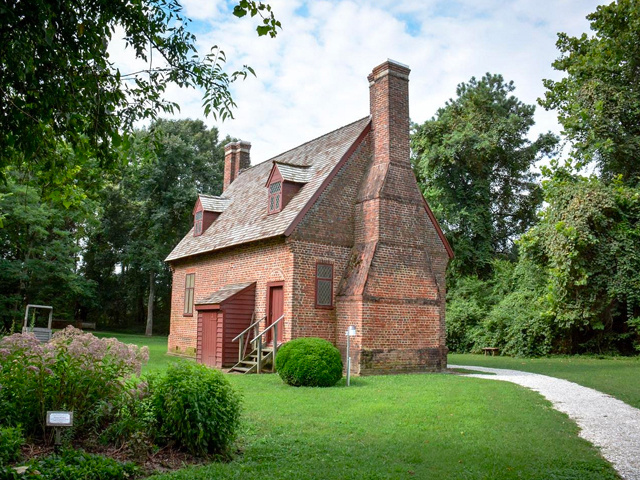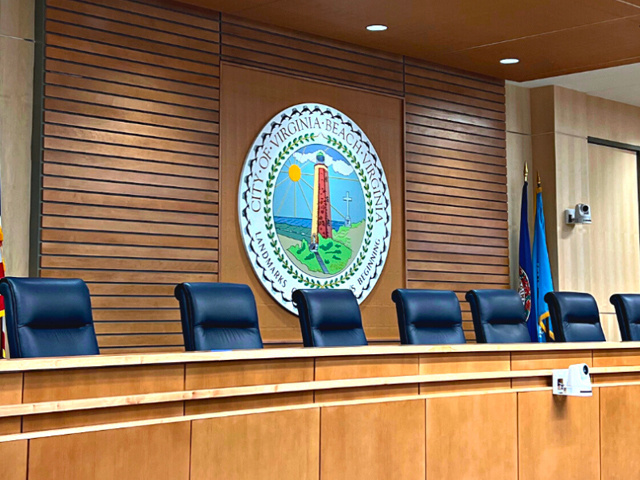Be In The Know
The Ripple Effect: Virginia Beach’s Three Most Common Flood Types
Knowing the differences in each type aids the City in developing solutions to reduce the impacts of flooding.

Flooding is a significant concern in Virginia Beach due to its unique geography and coastal location. Generally, the city faces three common types of flooding: fluvial floods (river floods), pluvial floods (street or flash floods) and coastal floods (commonly associated with storm surge).
Each type of flood has its own causes and is forecast in different ways. Here’s a closer look at these flood types and how the City’s Flood Protection Program is working to address them.
Fluvial Flooding (River Floods)
What is it?
Fluvial flooding, also known as river flooding, occurs when rivers, streams or other inland waterways overflow their banks due to excessive rainfall or melted snow upstream. This type of flooding is usually a result of prolonged or heavy rain that causes water levels in rivers to rise beyond their capacity. It is typically forecasted based on rainfall patterns and river water levels.
Where does it happen?
This type of flooding is most likely to affect areas along the Elizabeth River in Virginia Beach. In addition, the North Landing River sometimes affects communities such as Pungo and Princess Anne.
How is the City addressing it?
To manage fluvial flooding, the City’s Flood Protection Program focuses on improving stormwater management systems, including expanding drainage networks and enhancing floodplain management practices. These efforts aim to increase the capacity of rivers and streams to handle excess water, reducing the likelihood of overflow and protecting nearby communities.
Pluvial Flooding (Street or Flash Floods)
What is it?
Pluvial flooding, often referred to as street or flash flooding, occurs when heavy rainfall overwhelms the local drainage system, leading to rapid accumulation of water. Unlike fluvial flooding, pluvial floods can happen anywhere, even in areas not near a body of water. Flash floods are typically forecasted based on short-term weather predictions, especially during intense storms.
Where does it happen?
Urban areas with dense development and limited natural drainage, such as Virginia Beach’s Town Center and Kempsville, are most susceptible to pluvial flooding. The extensive paved surfaces in these areas can lead to rapid runoff, causing water to pool quickly during heavy rain.
How is the City addressing it?
The City is upgrading its drainage infrastructure to handle larger volumes of water during heavy rain events. Additionally, the City actively promotes incorporating green infrastructure solutions, such as rain gardens. The goal being to slow runoff and absorb excess water to reduce the frequency and severity of street floods in urban areas. True flash floods, with fast-moving water run-off from hilly or mountainous areas or as the result of dam or levee failure, do not occur in Virginia Beach.
Coastal Flooding (Storm Surge)
What is it?
Coastal flooding, often associated with storm surge, occurs when powerful storms push ocean water onto the land. This type of flooding is typically driven by the strong winds of hurricanes, nor’easters or other intense storms that force seawater inland. Coastal floods are forecasted by tracking storm systems and predicting storm surge levels based on wind speed, storm intensity and tide levels.
Where does it happen?
Coastal areas along the Atlantic Ocean and Chesapeake Bay are most vulnerable to storm surge in Virginia Beach. Neighborhoods near Back Bay, the Lynnhaven Inlet and along the coast, such as Bay Island and Ocean Park, can experience coastal flooding during major storms.
How is the City addressing it?
The City’s Flood Protection Program includes both engineered and natural solutions to mitigate the effects of coastal flooding. Engineered solutions such as automated tide gates, pump stations and flood barriers are designed to block storm surge from reaching vulnerable areas. At the same time, nature-based solutions such as dune nourishment and restoration, marsh restoration and marsh terraces, or the creation of living shorelines, help absorb and dissipate the energy of incoming water, providing a more sustainable long-term defense.
The Virginia Beach Flood Protection Program — The Ripple Effect — is a comprehensive 10-year plan to address recurrent flooding in Virginia Beach. In November 2021, Virginia Beach voters overwhelmingly supported a resiliency package for several key flood protection initiatives to include drainage improvements, tide gates, pump stations and flood barriers throughout the city. The projects are led by Public Works with support from a community oversight board for transparency and accountability. Learn more at VirginiaBeach.gov/RippleEffect.
Contact Information
Keep Reading
See All Posts-
Calendar News Blog Hot Topics Multimedia Social Media Mobile Apps











